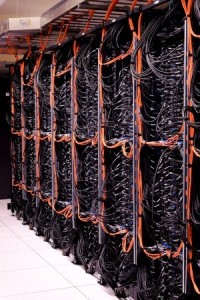
Proactive monitoring combined with proactive planning can ensure your network is protected before, during, and after a cyber attack.
Even for those who are just starting their own business, most newcomers know about business security, and the threats that lurk on the Internet. Not to mention that most of it is common knowledge. As an example, many computer viruses can be found on unsuspecting websites, not to mention suspicious looking emails as well. For the former, it’s always important to make sure the websites you and your employees visit, are business oriented.
For the latter, always check to see if suspicious looking emails are valid, and be sure to confirm with the supposed sender as well. While there’s no doubt many companies take their business security seriously, however, many of them take a reactive approach to their security. In other words, they wait until a threat appears before taking action. What most businesses should be shifting to, instead, is a proactive approach. That is, preparing for any event. Here are some tips for being more proactive in the workplace.
Know What Threats Are On The Internet
In order to take a proactive approach to your business security, you first need to know what threats lurk on the Internet. As I mentioned before, some of them are common knowledge, such as computer viruses found on suspicious websites. Other programs, however, you might not know are out there until it’s too late. Not only are there computer viruses which can bypass anti-virus software, but many downloads that seem trustworthy are anything but. Most of all, you need to know how to deal with ransomware, a malicious piece of software that completely hijacks your device. Not only does the hacker demand a ransom, but your files will be deleted if it isn’t paid. Having knowledge of this ahead of time, however, can save you a lot of trouble in the long run. While ransomware if often very difficult to get rid of once your device is infected, there are numerous ways to avoid it.
Set Contingency Plans
Now that you’re more familiar with the threats that lurk on the Internet, it’s time to have a backup plan. That way, if an incident does occur, you still have everything under control. First of all, anti-virus software is a must. Aside from doing the obvious and protecting your businesses from threats, it also assists you while you’re surfing the web. For example, Kaspersky and McAfee both have a “safe search” feature of sorts. When you’re surfing the web, the search results give you an indication as to which sites are safe, and which carry potential threats. As for another contingency plan, be sure to back up your data on a regular basis. The biggest threat about viruses like ransomware, isn’t that it locks your computer, but that your sensitive data is threatened with deletion. If all your files were stored via cloud or even a USB flash drive, however, your data could still be accessed from any other device.
As you can see, these are some major pointers for shifting your business from reactive to proactive.
One reason the former strategy might not be that effective, is because when a virus gets detected on your computer, it might be too late to remove it. With a proactive approach, on the other hand, you’re always thinking ahead. Not only that, but when an incident does occur in the workplace, it doesn’t take you by surprise.
For more information about proactive solutions for your business, feel free to contact us today at SystemsNet. Between Live Answer Help Desks, Managed Service Providers, and keeping the workplace secure, we look forward to hearing from you, and assisting you in the best way possible.

